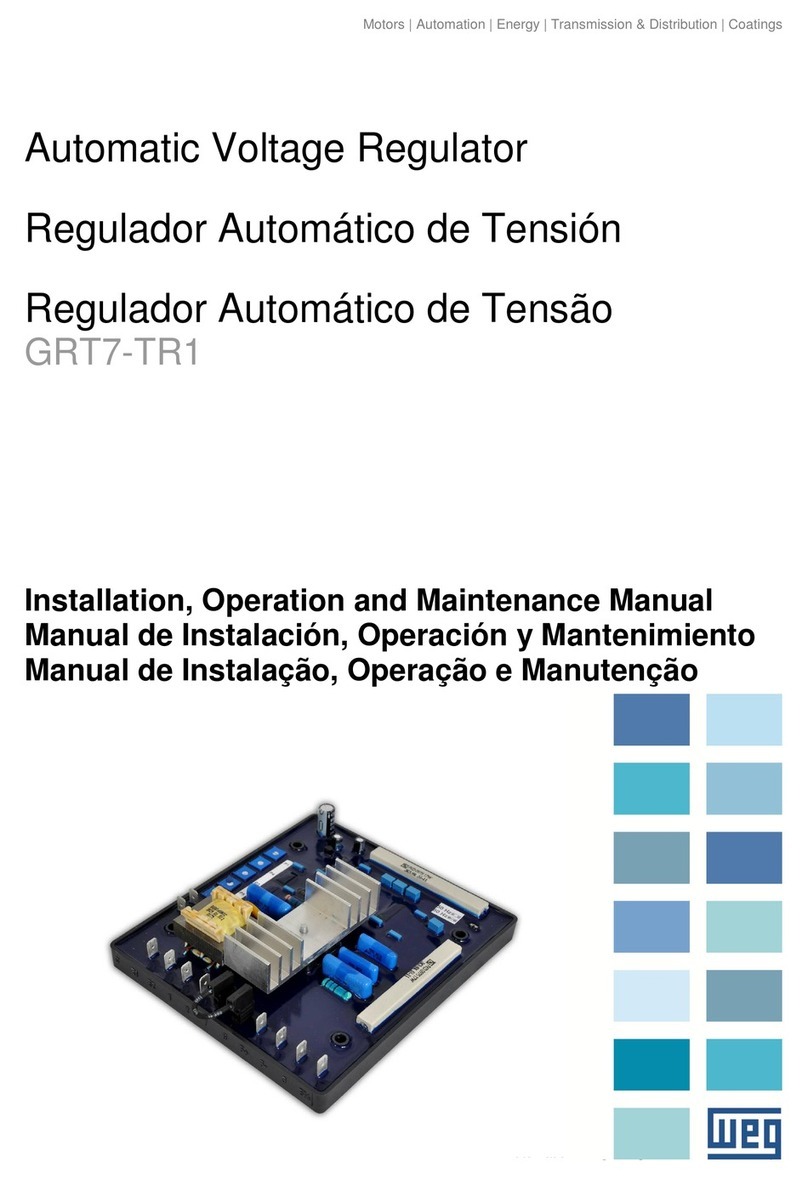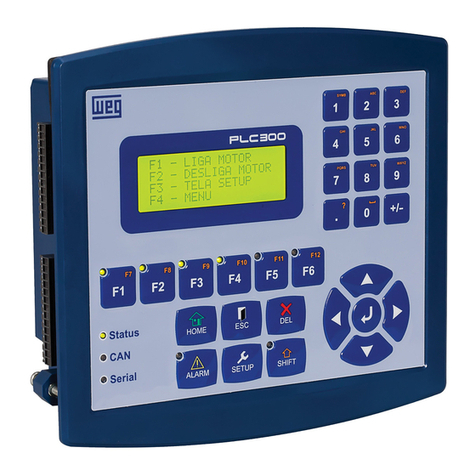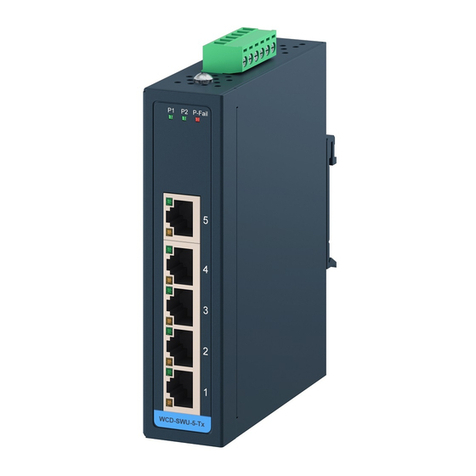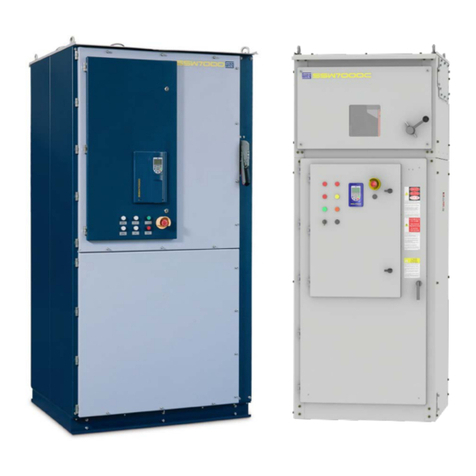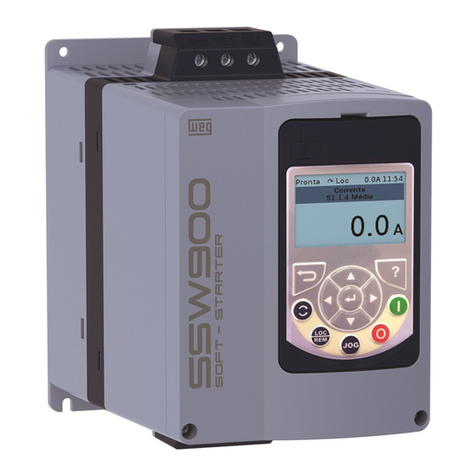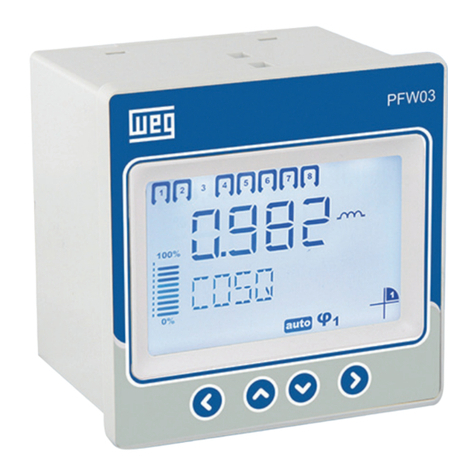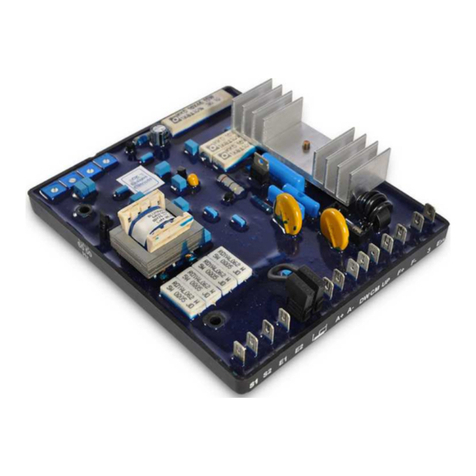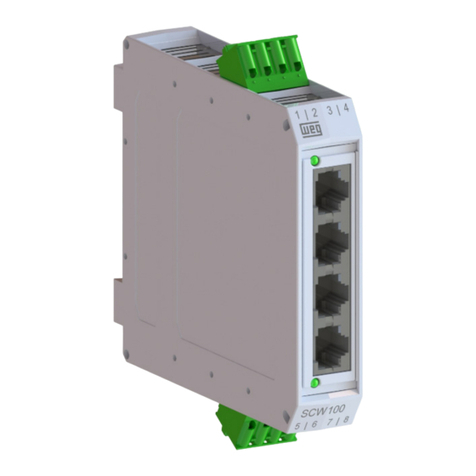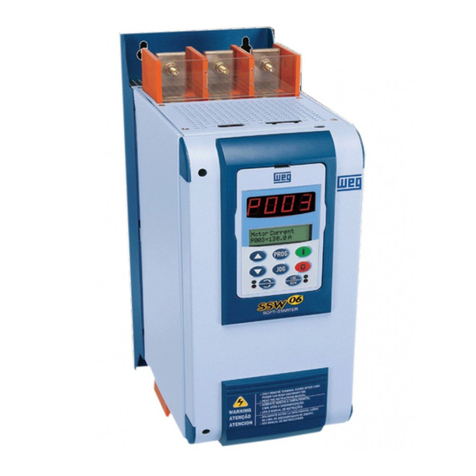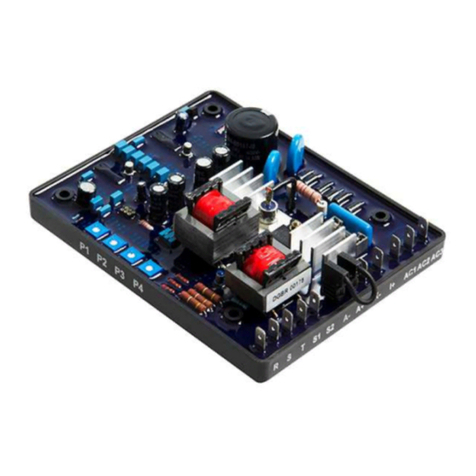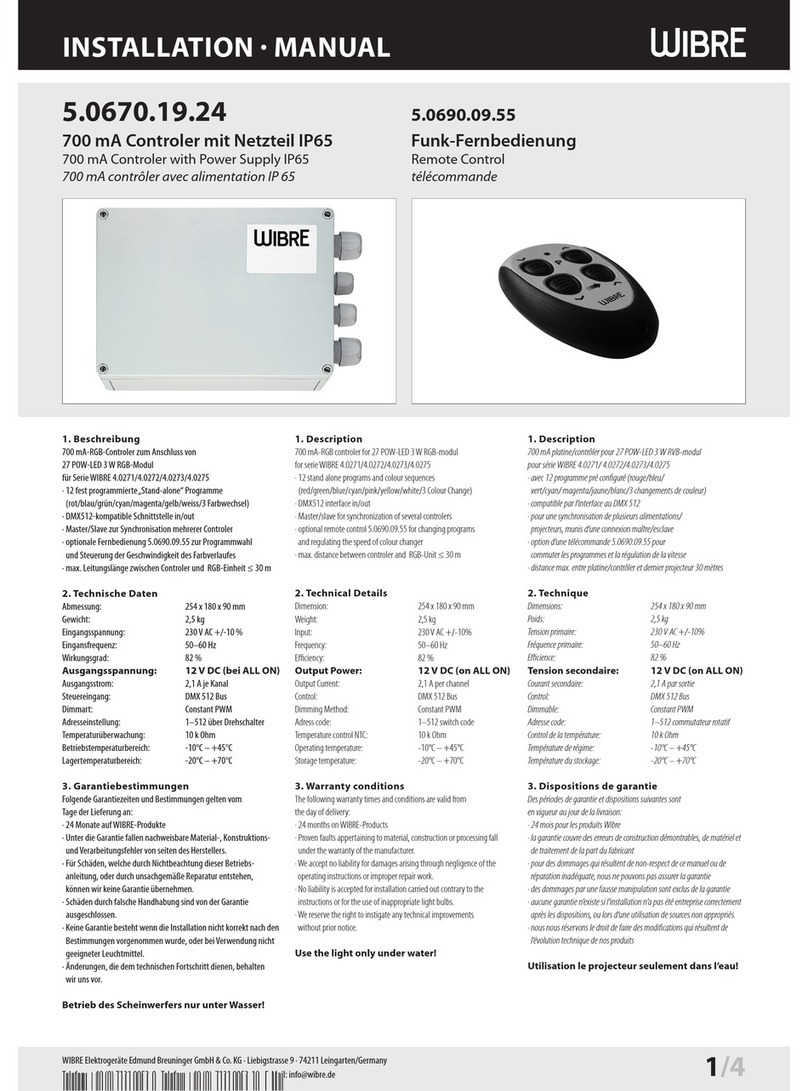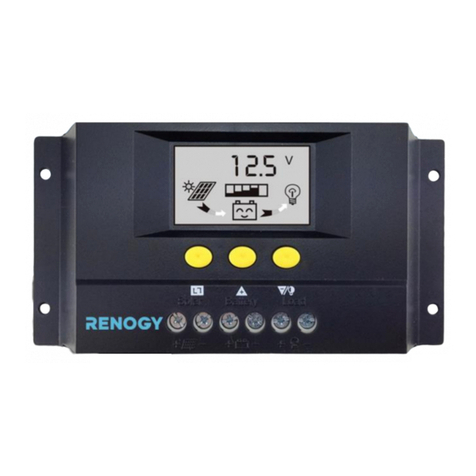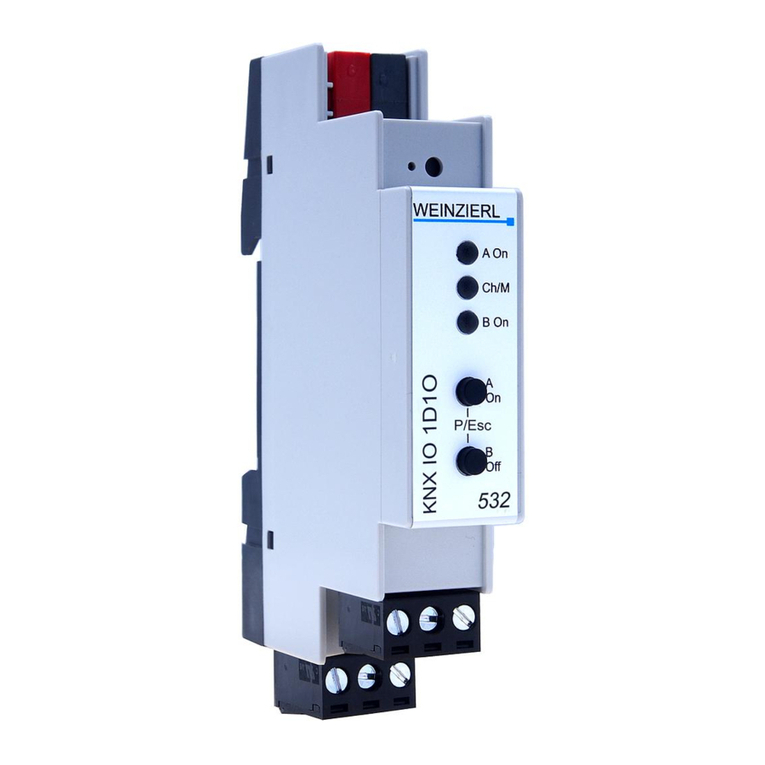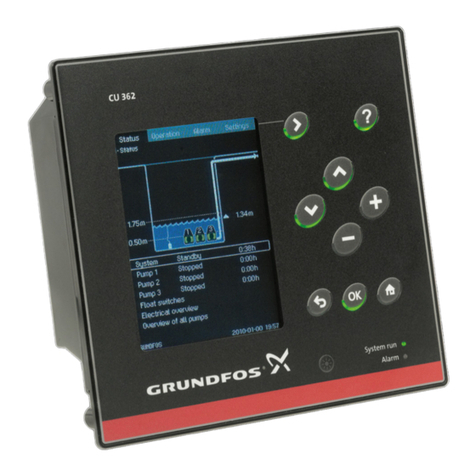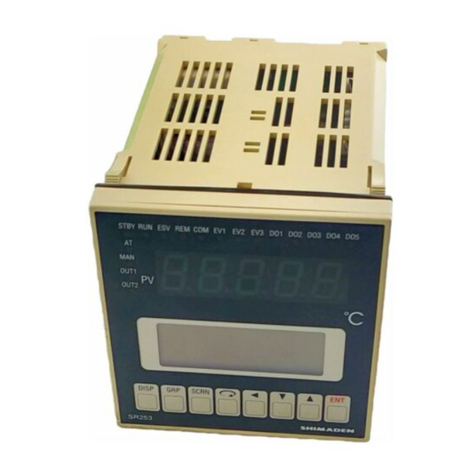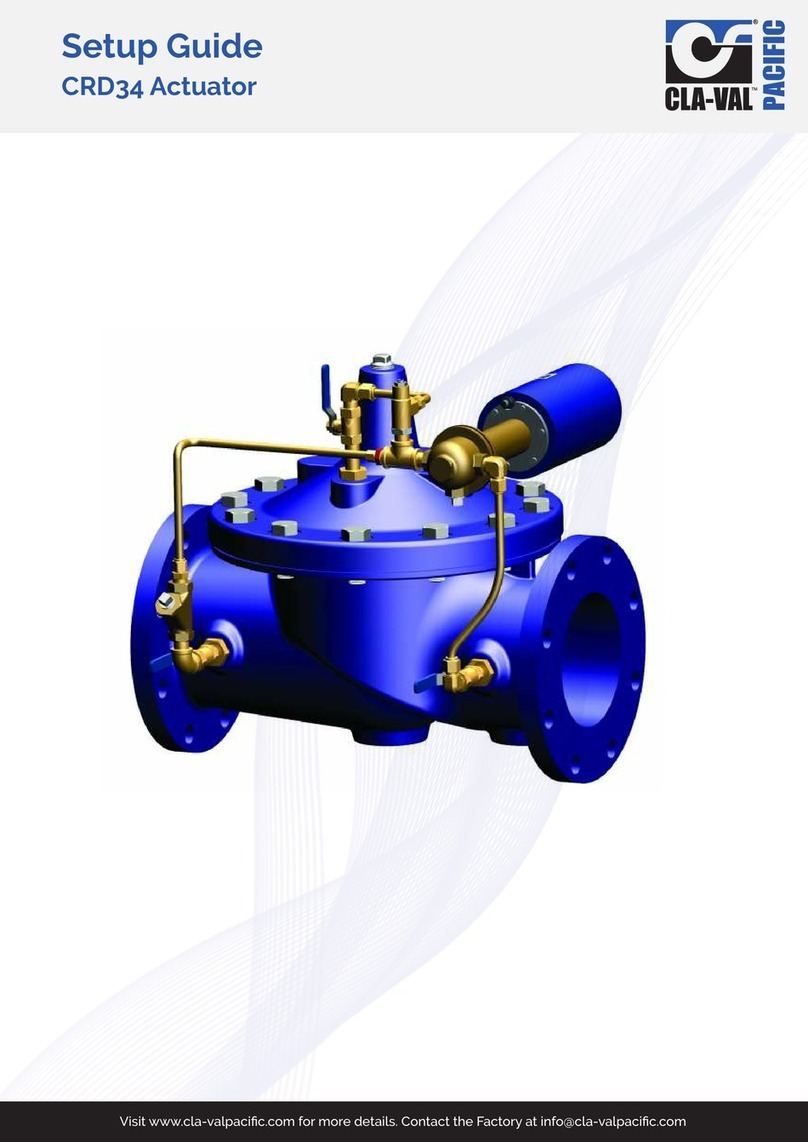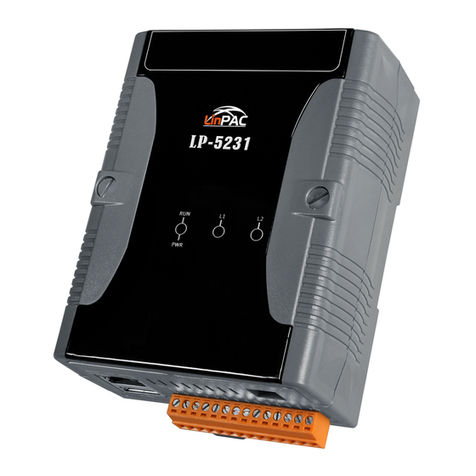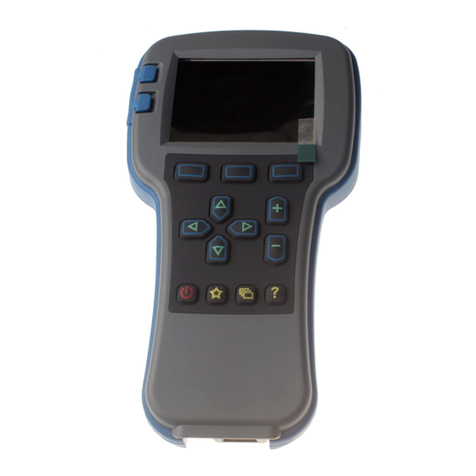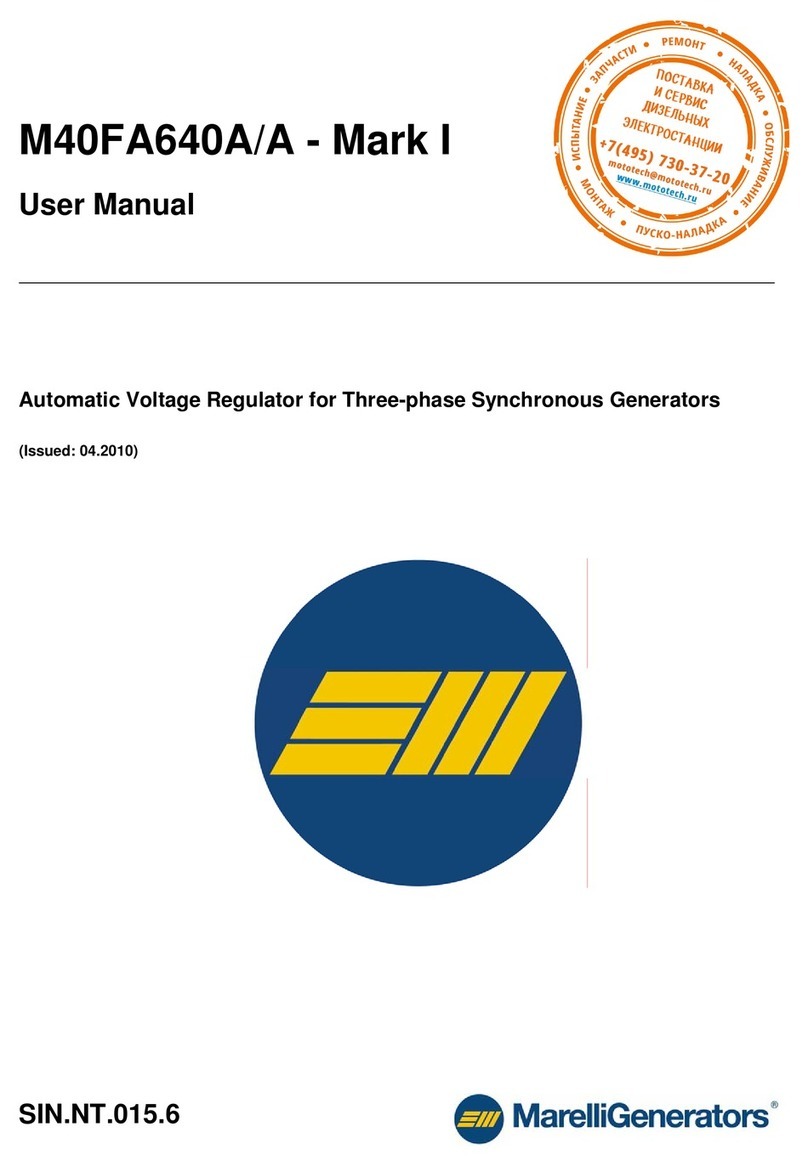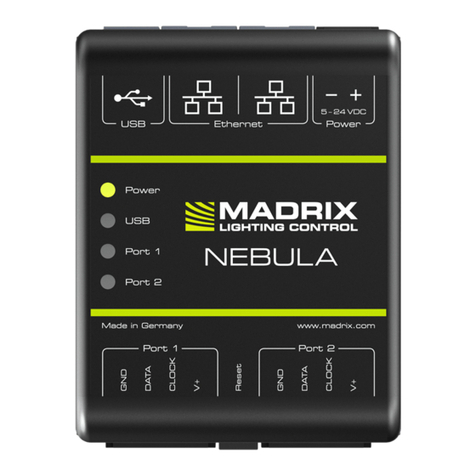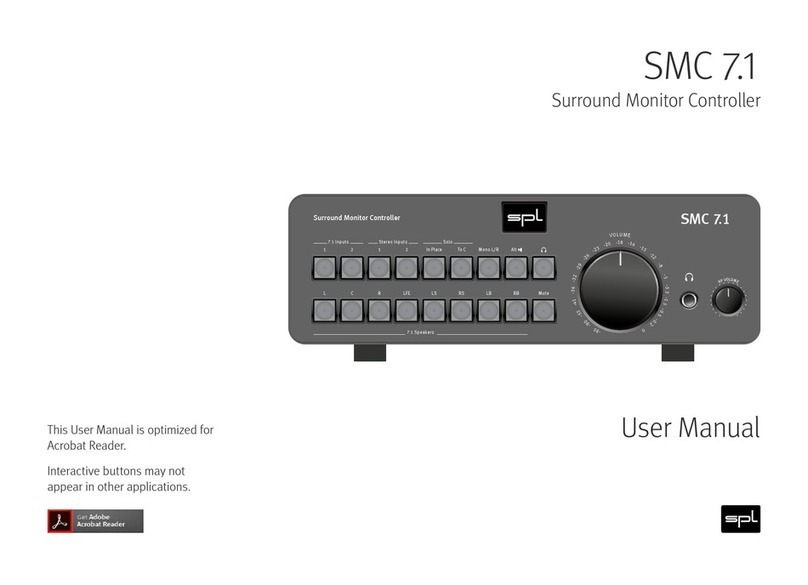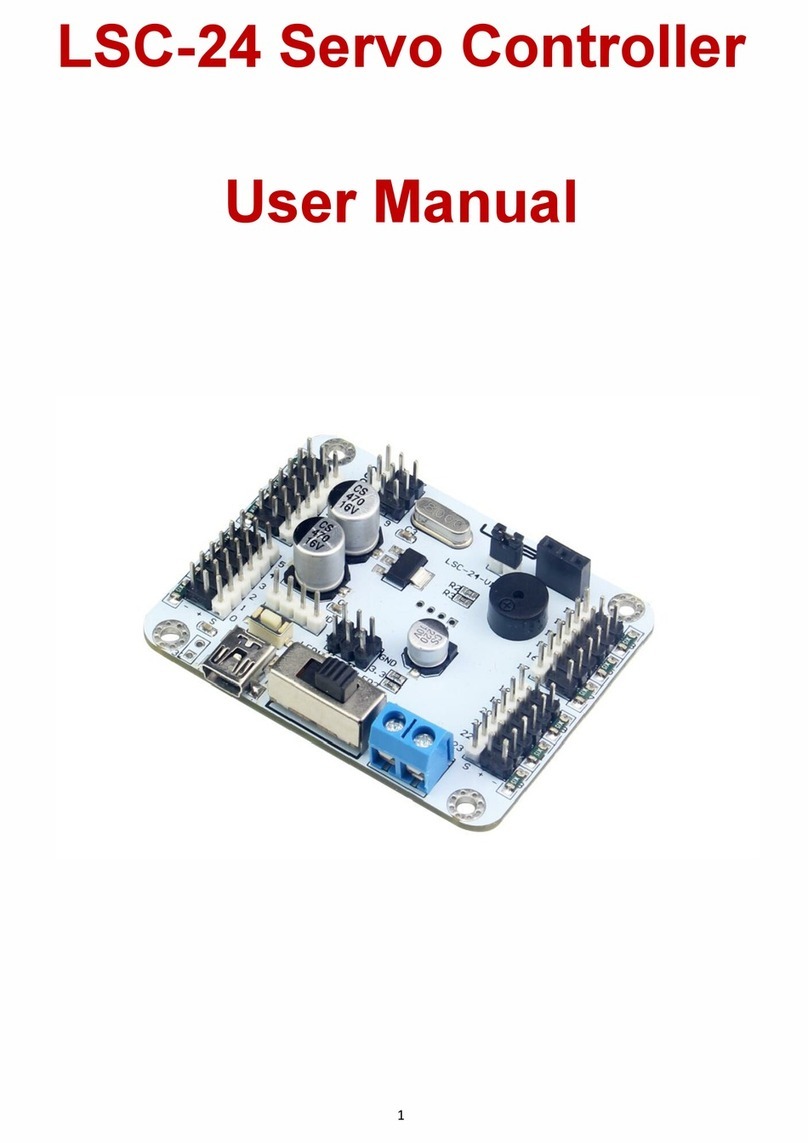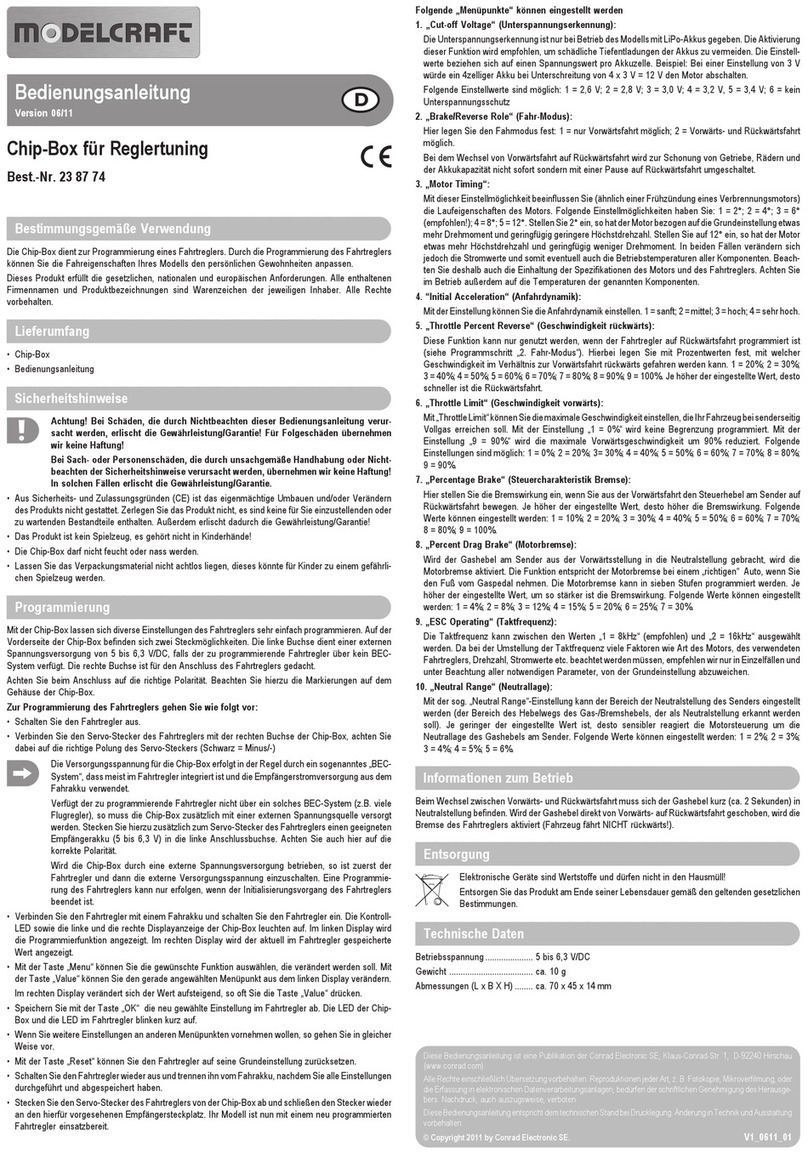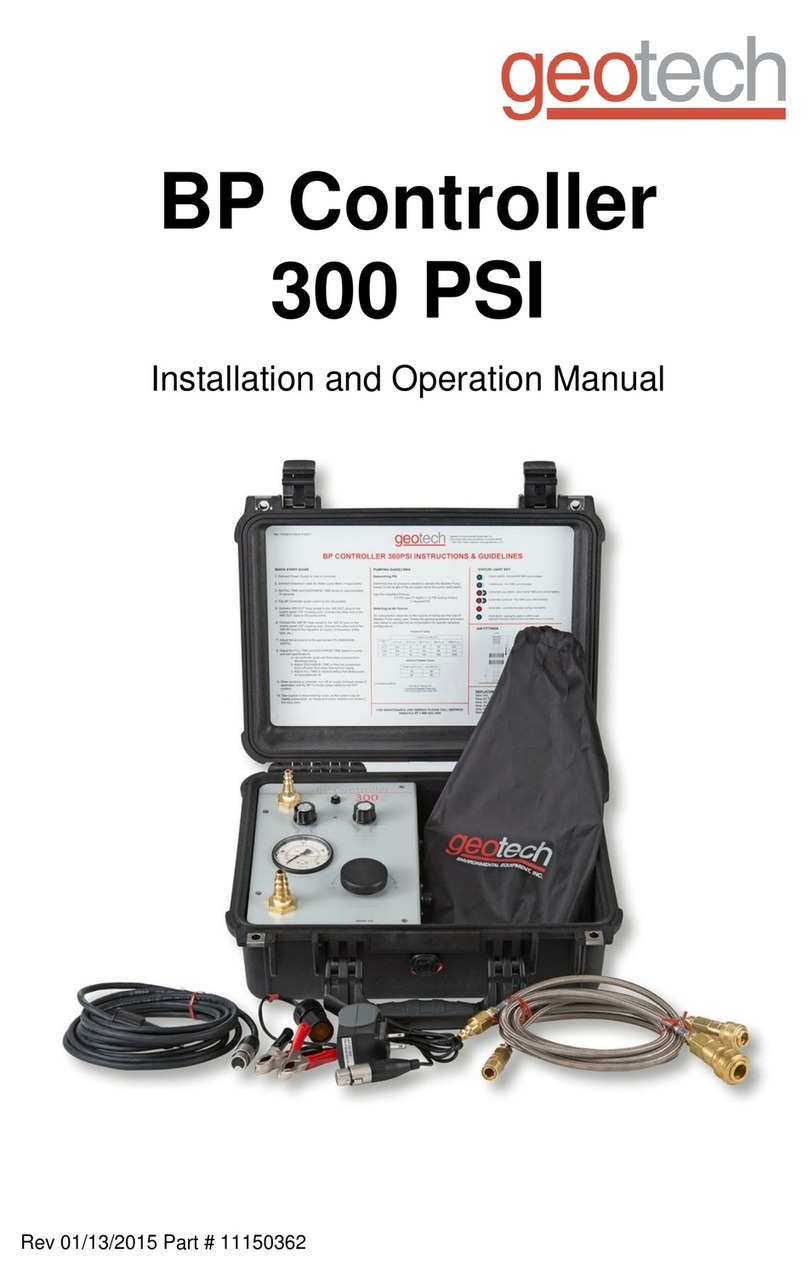WEG AVR-A-OPT-07 User manual

Motors | Automation | Energy | Transmission & Distribution | Coatings
Automatic Voltage Regulator
Regulador Automático de Tensión
Regulador Automático de Tensão
AVR-A-OPT-07
AVR-A-OPT-07E
AVR-A-OPT-07/T
Installation, Operation and Maintenance Manual
Manual de Instalación, Operación y Mantenimiento
Manual de Instalação, Operação e Manutenção


Installation, Operation and Maintenance Manual
Manual de Instalación, Operación y Mantenimiento
Manual de Instalação, Operação e Manutenção
Document # / Nº do documento: MWML00186
Models / Modelos: AVR-A-OPT-07, AVR-A-OPT-07E,
AVR-A-OPT-07/T
Language / Idioma: English / Español / Português
Revision / Revisión / Revisão: 01
October / Octubre / Outubro, 2017


GENERAL INDEX / ÍNDICE GENERAL / ÍNDICE GERAL
Installation, Operation and Maintenance Manual
Page 5 - 25
Manual de Instalación, Operación y Mantenimiento
Páginas 26 - 44
Manual de Instalação, Operação e Manutenção
Páginas 45 - 65
Português Español
English


www.weg.net
Automatic Voltage Regulator – AVR-A-OPT-07 / AVR-A-OPT-07E / AVR-A-OPT-07/T l 7
FOREWORD
This manual may in no way be reproduced, filed or transmitted through any type of media, whether
it be electronically, by printing, phonographically or any other audiovisual means without prior
consent from WEG. Infringement is subject to prosecution under the law.
Due to the continuous improvement of WEG products, the present manual may be modified and/or
updated without prior notice which may result in new revisions of the installation and maintenance
manuals for the same product.
WEG reserves itself the right not to update automatically the information included in this manual.
However, customers may at any time request any updated version of the manual, which will be
supplied to them free of charge.
If requested, WEG can supply an extra copy of this manual. The equipment serial number and
model should be informed by the customer, when making the request.
ATTENTION
1. It is absolutely necessary to follow the procedures contained in this manual for the warranty to be valid.
2. The alternator installation, operation and maintenance must be executed by qualified personnel.
NOTES
1. The total or partial reproduction of the information supplied in this manual is authorized, provided that
reference is made to its source;
2. If this manual is lost, an electronic PDF file is available from our website www.weg.net or another
printed copy can be requested.


www.weg.net
Voltage Regulator – AVR-A-OPT-04E – AVR-A-OPT-05PE l 9
INDEX
1.
SAFETY INFORMATION..............................................................................................11
2.
STORAGE INFORMATION ..........................................................................................11
3.
INTRODUCTION...........................................................................................................11
4.
TECHNICAL CHARACTERISTICS ..............................................................................12
5.
REGULATOR NAMEPLATE ........................................................................................12
6.
ANALOG VOLTAGE REGULATORS TERMINOLOGY
...............................................13
7.
BLOCK DIAGRAM .......................................................................................................13
8.
TRIMPOTS FUNCTION ................................................................................................13
9.
STATEMENT OF LED’S...............................................................................................13
10.
TRIMPOTS ADJUSTMENT.........................................................................................13
11.
CONSTRUCTION POSSIBLE.....................................................................................14
12.
IDENTIFICATION OF THE MOUNTED ON METALLIC BOX.....................................14
13.
IDENTIFICATION OF THE ENCAPSULED ................................................................15
14.
OPERATION ...............................................................................................................16
14.1.
VOLTAGE REGULATOR...................................................................................16
14.2.
POWER CIRCUIT CONNECTION......................................................................16
14.3.
FIELD FLASHING..............................................................................................16
14.4.
U/F OPERATION................................................................................................16
14.5.
PARALLEL OPERATION FOR TWO OR MORE ALTERNATORS ..................17
15.
CONNECTION DIAGRAMS........................................................................................18
15.1.
CONNECTION FOR GENERATOR WITHOUT AUXILIARY COIL....................18
15.2.
CONNECTION FOR GENERATOR WITH AUXILIARY COIL ...........................19
15.3.
CONNECTION FOR AVR MOUNTED IN THE METALLIC BOX.......................20
16.
DIMENSIONAL DRAWINGS (MM) .............................................................................21
16.1.
ENCAPSULATED REGULATOR.......................................................................21
16.2.
REGULATOR MOUNTED IN THE METALLIC BOX .........................................22
17.
DIAGRAM FOR TEST WITHOUT ALTERNATOR......................................................23
18.
PROBLEMS, CAUSES AND CORRECTIVE ACTIONS .............................................25
19.
PREVENTIVE MAINTENANCE...................................................................................25
20.
WARRANTY................................................................................................................25


www.weg.net
Automatic Voltage Regulator – AVR-A-OPT-07 / AVR-A-OPT-07E / AVR-A-OPT-07/T l 11
1. SAFETY INFORMATION
To guarantee the safety of the operators, the correct installation and proper operation of the equipment, the following
precautions must be taken:
Installation and maintenance services should be performed only by qualified personnel, using appropriate equipment;
The product instruction manual and specific product documentation must always be consulted before proceeding with
its installation, handling and parameter setting;
Adequate precautions should be taken to avoid drops, knocks and/or risks to the operators and the equipment.
Always disconnect the main power supply and wait for the alternator to come to a complete stop, before touching any
electrical component associated with the equipment including the control connectors. Do not touch the input and output
connectors since high voltages may be present even after the power has been switched off and keep them isolated from
the rest of the main command circuit of the alternator.
2. STORAGE INFORMATION
If the alternator needs to be stored for a short period of time before its installation and/or start-up, the following measures
should be taken:
The regulator must remain in its original package or in a similar package which provides the same safety conditions
against mechanical damages, excessive temperature and humidity so as to avoid rusting of contacts and metallic parts,
damages to integrated circuits or any other damage arising from improper storage;
Properly packaged, the regulator must be kept in a dry and well-ventilated area away from direct sunlight, rain, wind
and other adverse weather conditions in order to ensure the preservation of its operational functions.
Failure to comply with the above mentioned recommendations could exempt the supplier of the equipment from any
responsibilities and liabilities from any resulting damages as well as voiding the warranty on the equipment or damaged
part.
3. INTRODUCTION
The AVR-A-OPT automatic analog voltage regulators are compact while featuring high reliability and low cost. They were
designed with state-of-the-art technology for voltage regulation of brushless synchronous alternators.
Their control and regulation circuits use semiconductors and integrated circuits duly tested following the most demanding
quality requirements. Mechanical components for field flashing are not required, and its system is completely solid state
and encapsulated in epoxy resin suitable for maritime environments and able to withstand vibrations of up to 50 mm/s. It
is fitted with internal voltage adjustment by trimpot and external by potentiometer allowing an alternator voltage
adjustment.
The PID control system is adjusted with one trimpot that adjust the proportional gain allowing a wide adjustment range
while allowing operation of the regulator with several types of alternators, and with a high number of dynamic
characteristics. The under frequency protection set point is adjustable by trimpot, and the nominal operating frequency
can be set to 50Hz or 60Hz.

www.weg.net
12 l Automatic Voltage Regulator – AVR-A-OPT-07 / AVR-A-OPT-07E / AVR-A-OPT-07/T
4. TECHNICAL CHARACTERISTICS
Table 4.1: Technical characteristics
Model
s
AVR-A-OPT-07
AVR-A-OPT-07E
AVR-A-OPT-07/T
Characteristics
Power supply
160-300 Vac (1
∅
or 2
∅
)
Rated operation voltage
(potency) 220Vac (1∅or 2∅)
Feedback Adjustment At
Trimpot Vad
94 to 127 Vac 170 to 250 Vac 320 to 420 Vac 374 to 506Vac 408 to 552 Vac
Maximum Voltage
Feedback
Transitional 170Vac 320Vac 504Vac 610Vac 670Vac
Feedback Three-Phase
Nominal operating current
10A (Encapsulated) 10A (Metallic Box)
Peak Current
16A (Encapsulated) 16A (Metallic Box)
Maximum rated power input 750VA 1050VA
Power consumption ~13VA ~13VA
Minimum Voltage to Priming
5Vca
Power input fluctuation
voltage ±30%
Static Regulation
0,5%
Adjustable Dynamic
Response
8 up to 500ms
Field resistance @ 20ºC
6 up to 50Ω
Operation U / F = Constant
Configurable 0 to 30% Fn
Over Voltage
Protection (*)
3 %
Above
of Un
Voltage Internal Set ±15%
Voltage ExternalAdjustment
¹
Through of the potentiometer 5kΩ/ 3W
Doop adjustment To
Operation in Parallel 0 a 5%
Analog Input ±9V for AVR-A-OPT-07E
Ambient working
temperature -40ºC up to +80ºC
Maximum relative humidity of
air
(Operation and storage) 0 - 80%
Altitude for operation Less than 2000 m or greater equal to 2000 m
Degree of protection IP00
Approximate Mass Encapsulated: 700g Metallic Box: 1,450g
(*) The protection circuit over voltage is inoperative in case of failure of the electronic circuit and can thus the generator voltage rise to critical levels.
This may be circumvented by using relay overvoltage in the system.
¹ Recommended the use of multi-turn potentiometer.
5. REGULATOR NAMEPLATE
The example above shows the main characteristics to be followed before installation.
NOTE
The identification nameplate is attached to the bottom of the regulator frame.
Figure 5.1: Regulator Nameplate
Operating Frequency
Model
Power Supply
Excitation Voltage
Rated Current
Sensing Voltage

www.weg.net
Automatic Voltage Regulator – AVR-A-OPT-07 / AVR-A-OPT-07E / AVR-A-OPT-07/T l 13
6.
ANALOG VOLTAGE REGULATORS TERMINOLOGY
1 2 3 4 5 6
AVR-A-OPT -
07
XXX XXX
10A ENC
07E
07/T
CC
1- Analog Voltage Regulator. [OPTIMUS TECHNOLOGY].
2- Sequence defined by the manufacturer.
3- Nominal voltage feedback.
4- Power supply voltage.
5- Rated current field.
6- ENC = Encapsulated.
CC = Metallic Box.
7. BLOCK DIAGRAM
Figure 7.1: Block diagram
8. TRIMPOTS FUNCTION
Vad: Voltage Adjustment.
Stb: Stability Adjustment.
U/F: Adjusting the beginning of the range of the Protection U/F= Constant.
Drp: Droop adjustment.
9. STATEMENT OF LED’S
OK: Regulator is on
Oexc: On: Under stress acting
Off: Over voltage not acting.
Hz: ON: U/F acting.
Off: U/F not acting.
10. TRIMPOTS ADJUSTMENT
Vad: Turning clockwise increases the voltage and counterclockwise decreases.
Stb: Turning clockwise slower response and faster counter-clockwise.
U/F: Rotating clockwise decreases the range of U/F and counterclockwise increases.
Drp: Turning clockwise increases the reactive compensation range and counterclockwise decreases.
Note: Of the regulators encapsulated version, can be connected potentiometer for fine voltage adjustment (5kΩ/3W,
preferably 10 laps) on terminals with this symbol
.
Power stage
G
U/F
DROOP
+
+
-
+
Analog input
± 9 Vdc
Reference value
Excitation field
PID
Sensing
self-priming
stage.

www.weg.net
14 l Automatic Voltage Regulator – AVR-A-OPT-07 / AVR-A-OPT-07E / AVR-A-OPT-07/T
NOTE
* A potentiometer may be connected for fine voltage adjustment (5 kΩ/ 3 W) at terminals.
*
The U/F and Stb trimpots were preseted and sealed, but if adjustments are required, They can be
performed according to the procedures described in this manual.
11. CONSTRUCTION POSSIBLE
●AVR-A-OPT-07- Encapsulated in resin, resistant to vibration and salt spray.
●AVR-A-OPT-07E- With analog input, encapsulated in resin, resistant to vibration and salt spray.
●AVR-A-OPT-07/T - mounted in a metallic box containing fine adjustment potentiometer voltage protection fuse and on /
off switch (Standard Telebrás).
12. IDENTIFICATION OF THE MOUNTED ON METALLIC BOX
SUBTITLE
:
J1= 1 and 2 = 60Hz / 2 and 3= 50Hz
P1= Voltage Adjustment.
P2= Stability adjustment.
P3= Setting the beginning of the operating range of the U/F protection.
P4= Droop adjustment.
L1= under frequency protection actuated.
L2= indication of an overvoltage.
L3= on static exciter.
5= when there is no potentiometer or +/- 9V (07E), make jumper to pin 6.
6= when there is no potentiometer or +/- 9V (07E), make jumper to pin 5.
1= Power supply voltage (See configuration of the model as per item 12).
2= Power supply voltage (See configuration of the model as per item 12).
3= Supply Voltage (See configuration of the model as per item 12).
4= Power supply voltage (See configuration of the model as per item 12).
F+= Excitation Field
F-= Excitation Field
S1= TC In/5A
S2= TC In/5A
R= Voltage Feedback
S= Voltage Feedback
T= Voltage Feedback

www.weg.net
Automatic Voltage Regulator – AVR-A-OPT-07 / AVR-A-OPT-07E / AVR-A-OPT-07/T l 15
13. IDENTIFICATION OF THE ENCAPSULED
Subtitle:
Vad= Voltage Adjustment.
Stb= Stability adjustment.
U/F= Setting the beginning of the operating range of the U/F protection.
Drp= Droop adjustment.
Hz= under frequency protection actuated.
Oex= indication of an overvoltage.
OK= on static exciter.
=External Potentiometer 5KΩ, when there is no potentiometer or +/- 9V (07E), make jumper between the pins.
1= Power supply voltage (See configuration of the model as per item 15).
2= Power supply voltage (See configuration of the model as per item 15).
3= Power supply voltage (See configuration of the model as per item 15).
4= Power supply voltage (See configuration of the model as per item 15).
F+= Excitation Field
F-= Excitation Field
S1= TC In/5A
S2= TC In/5A
R= Voltage Feedback
S= Voltage Feedback
T= Voltage Feedback

www.weg.net
16 l Automatic Voltage Regulator – AVR-A-OPT-07 / AVR-A-OPT-07E / AVR-A-OPT-07/T
14. OPERATION
14.1.
VOLTAGE REGULATOR
It compares the actual output voltage from the alternator with the theoretical adjusted value through the trimpot
of voltage adjustment Vad, plus the external voltage adjustment (if any). The error is processed by the sensing
loop whose value determines the thyristor firing angle which may vary from 0 to 180°, thus controlling the
output voltage of the alternator.
14.2.
POWER CIRCUIT CONNECTION
The alternator voltage or the auxiliary winding voltage is connected to the terminals 2 and 3. This rectified
voltage is applied, in a controlled fashion, to the alternator exciter field.
14.3.
FIELD FLASHING
Generation begins through the residual voltage of the alternator. Once the voltage has reached about 10% of
the nominal voltage, the regulator controls the alternator voltage causing it to rise through the initial ramp in
approximately 3 seconds. When the alternator reaches its nominal value, the PID control loop will maintain the
alternator output voltage constant within the adjusted value.
14.4.
U/F OPERATION
This operation is determined by trimpot U/F, jumper J1 and associated components. The J1 jumper determines
the operating frequency (50 or 60 Hz), following the logic below:
•J1 pins 1 and 2: 60 Hz
•
J1 pins 2 and 3: 50 Hz
Trimpot U/F determines the set point of the U/F mode, that can be from the nominal frequency (Fn) down to
1/3 of Fn, the value of which comes out of the factory adjusted to 10% below Fn. For operation at 60Hz it is
adjusted to 54Hz and for operation at 50 Hz it is adjusted to 45Hz (see Figure 14.4.), the value of which can
be changed based on each application requirements.
Figure 14.4.1: U/F operation
Output voltage (Vac)
Frequency (Hz)
Output voltage (Vac)
Frequency (Hz)
45
U
U/f
50
54
U
U/f
60

www.weg.net
Automatic Voltage Regulator – AVR-A-OPT-07 / AVR-A-OPT-07E / AVR-A-OPT-07/T l 17
14.5.
PARALLEL OPERATION FOR TWO OR MORE
ALTERNATORS
The reactive compensation method applied is called a phasor diagram (see Figure 14.5.1). Through this diagram, the
alternator output voltage signal is measured and compared with the alternator current voltage. The result of this interaction
introduces a sensing error of the actual voltage signal, causing an increase or a decrease in the alternator voltage, thus
maintaining the reactive between the alternators within acceptable values. The adjustment of this compensation is made
through trimpot Drp.
Figure 14.5.1: Phasorial diagram
According to the phasor diagram, the sensing voltage is influenced by the current coming from phase S, which is added to
the voltage of phases R and T. The influence is small in module and large in phase, which means that there is good
compensation for reactive loads and a small influence with active loads.
The current transformer (CT) for reactive compensation must be in phase S of the alternator, and the voltage sensing
signal must be in phases R and T.
To make sure the compensation is in the proper direction, proceed as follows:
Operate the alternator by itself (isolated from the grid) and apply a resistive load with about 20% of the alternator capacity;
After completely rotating the Drp trimpot clock wise (CW), the alternator voltage should decrease.
Rotating back the trimpot completely CCW, alternator voltage should then increase; If this occurs, the CT polarity iscorrect.
Otherwise the CT should be inverted.
When several alternators are connected in parallel, this procedure is required to ensure that all the CT’s are properly
polarized.
The current transformer for compensation of reactive must be in phase S of the alternator and the feeding signal in the
phase R.
To ensure the correct polarization of TC, Inductive Resistive loads must be applied and the system checked for good
response as below.
Resistive Loads: It will not present compensation with resistive load, keeping the excitation current and alternator voltage
constant in the value adjusted via trimpot Drp. In case of compensation, it indicates that TC is in the wrong phase.
Inductive Loads: With inductive load application, it shall present negative compensation, decreasing the excitation current
corresponding to the gain adjusted in the trimpot Drp (0 to 15% voltage adjusted in the Vad. If the compensation is positive,
it indicates the TC is inverted.
Capacitive Loads: With application of capacitive loads, it will present a positive compensation, increasing the excitation
current corresponding to the gain adjusted in the trimpot Drp (0 to 15% voltage adjusted in the Vad. If the compensation
is positive, it indicates the TC is inverted.
Accuracy class of 0,6C12,5;
Window or bar type;
Transformer ratio will be In/5A or In/1A, where In/xA is the ratio of the TC primary. Ex.: 100/5A, 150/5A, 100/1A;
5A secondary current for regulator PAR/5 and 1A for regulator PAR/1;
The current in TC primary must be 20% bigger than the nominal current of the machine;
The TC operation frequency must be equal to the alternator frequency;
The TC isolation voltage class must be bigger than the alternator output voltage;
It must support 1.2 x In.
RT
R
T
IS
S

www.weg.net
18 l Automatic Voltage Regulator – AVR-A-OPT-07 / AVR-A-OPT-07E / AVR-A-OPT-07/T
15. CONNECTION DIAGRAMS
15.1.
CONNECTION FOR GENERATOR WITHOUT AUXILIARY COIL
Figure 15.1.1: Connection without auxiliary coil generator with single voltage of 170 to 250Vac
Figure 15.1.2: Connection without auxiliary coil generator with single voltage of 350 to 400Vac

www.weg.net
Automatic Voltage Regulator – AVR-A-OPT-07 / AVR-A-OPT-07E / AVR-A-OPT-07/T l 19
Figure 15.1.3: Connection without auxiliary coil generator with single voltage of 440 to 480Vac
15.2.
CONNECTION FOR GENERATOR WITH AUXILIARY COIL
Figure 15.25.2.1: Connection with auxiliary coil generator with single voltage of 110 to 180Vca
Figure 15.2.2.2: Connection generator with auxiliary winding with single voltage or 3 voltages, from 170 to 250Vca.

www.weg.net
20 l Automatic Voltage Regulator – AVR-A-OPT-07 / AVR-A-OPT-07E / AVR-A-OPT-07/T
* The AVR-A-OPT-07E regulators, the external potentiometer function is replaced by Analog Input.
The connection must be made respecting the voltage specified for the model. See sensing voltage on the
identification label or, in case of doubt, consult the technical service;
For connection of a generator of three voltages (220/380 / 440Vac - YY/Y/Y) and tensions of 380 or 440Vac,
connecting in means of the coils.
If no potentiometer is connected, keep terminals 6 and 7 jumped (short-circuited).
ATTENTION
1.
Before connecting the regulator to the alternator, check installation manual and the nominal reference
voltage;
2.
If the reference voltage is not equal to the alternator output voltage, do not make the connections
without first contacting the service department.
15.3.
CONNECTION FOR AVR MOUNTED IN THE METALLIC BOX
1- The connection must be made respecting the voltage specified for the model.
See supply voltage on the identification label or in case of doubt consult the technical assistance service;
2- The connection must be made respecting the voltage specified for the model.
See sensing voltage on the identification label or in case of doubt consult the technical assistance service;
3- CT/In 5A, connection needed only for parallel operation;
4- Connection for potentiometer of the voltage fine adjustment (optional);
5 Connecting to control of the voltage for signal ± 9 VDC (AVR-A-OPT-07E);
6- Use Jumper version only no pot and no analog input;
7- We suggest installing the fuse (35 or 50A, depending on model) at the entrance of the exciter (terminals 3 and 4).
This manual suits for next models
2
Table of contents
Languages:
Other WEG Controllers manuals
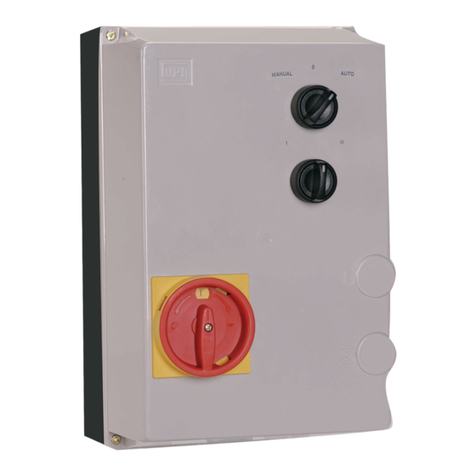
WEG
WEG PDWCA User manual
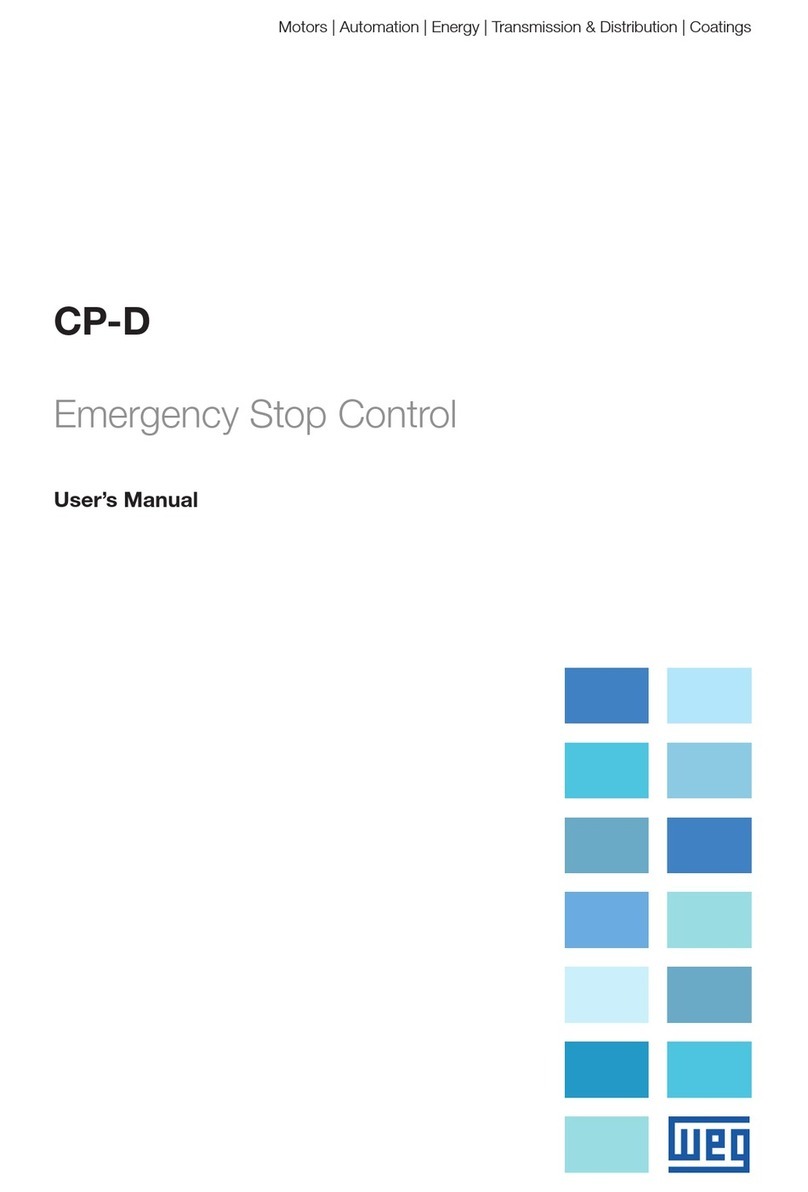
WEG
WEG CP-D User manual
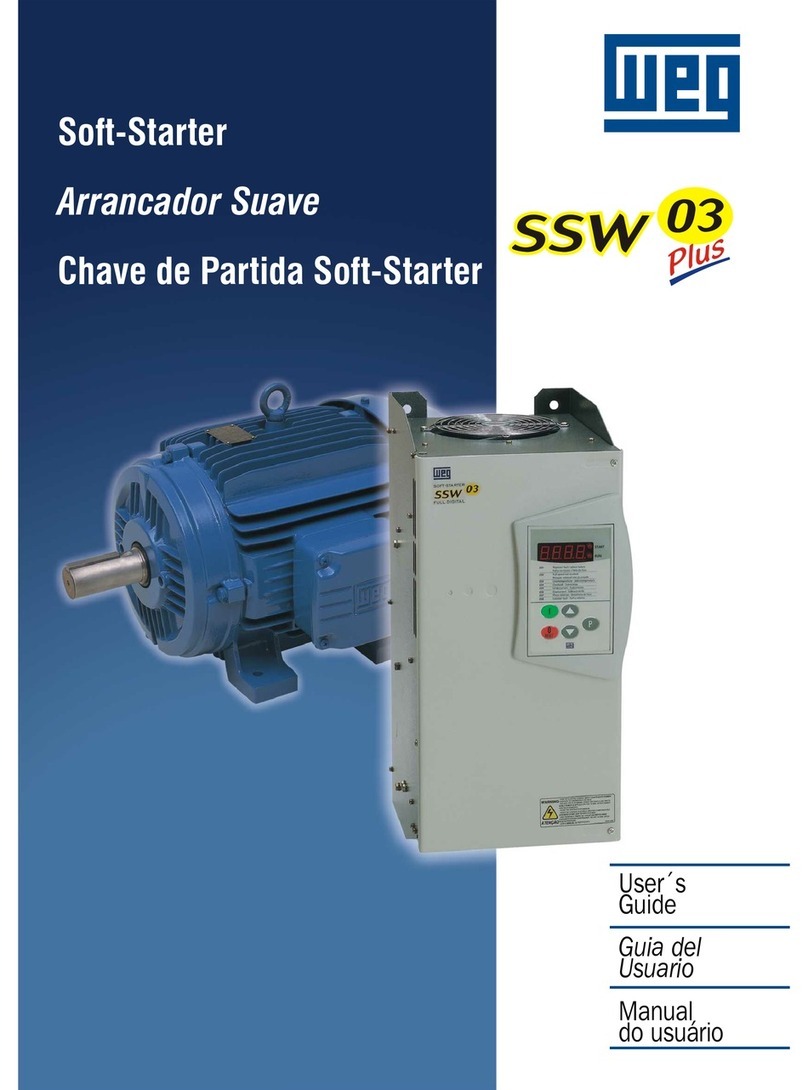
WEG
WEG SSW-03 Plus Series User manual
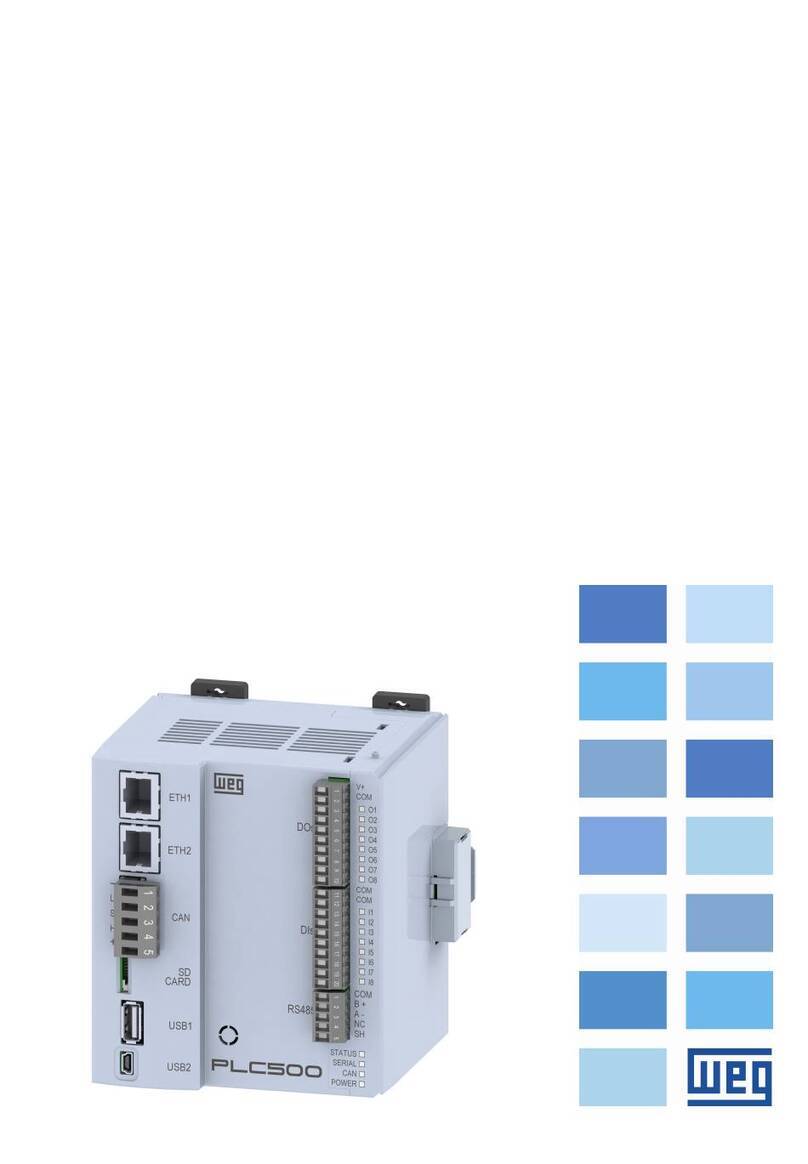
WEG
WEG PLC500 Installation and operating instructions
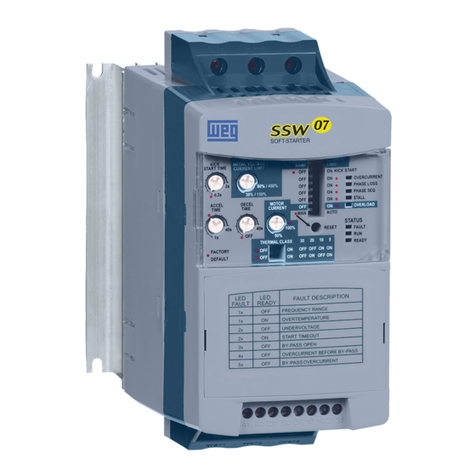
WEG
WEG SSW07 Series User manual
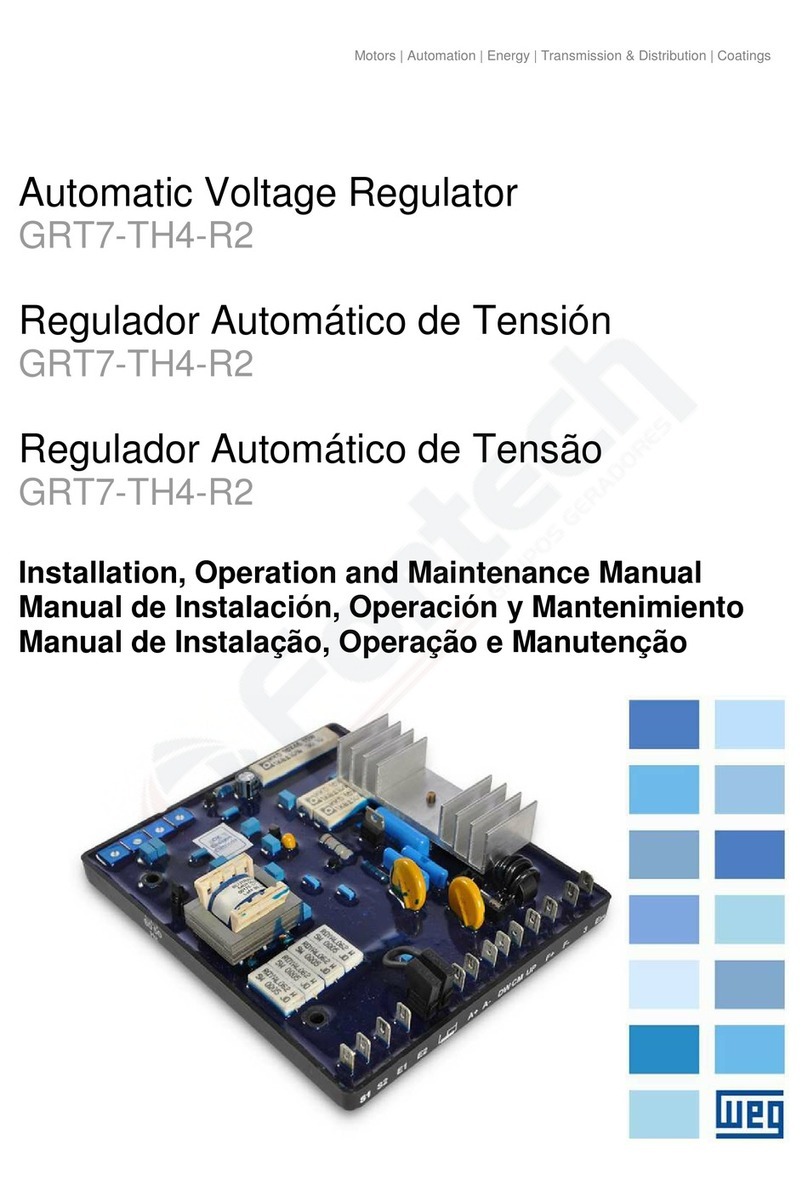
WEG
WEG GRT7TH4 R2 User manual
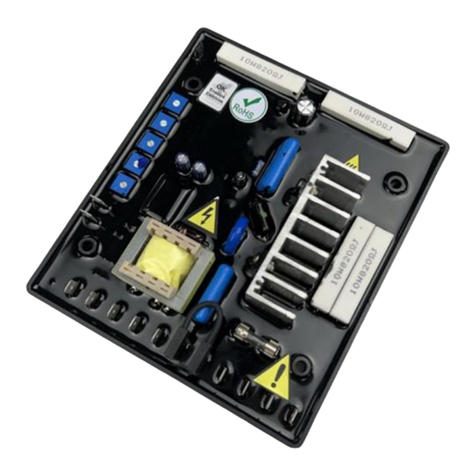
WEG
WEG GRT7-TH4E User manual
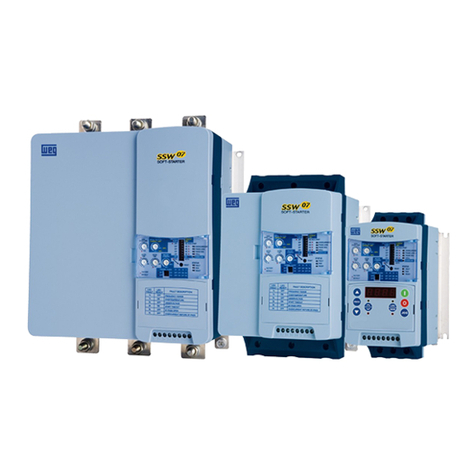
WEG
WEG SSW07 Series User manual
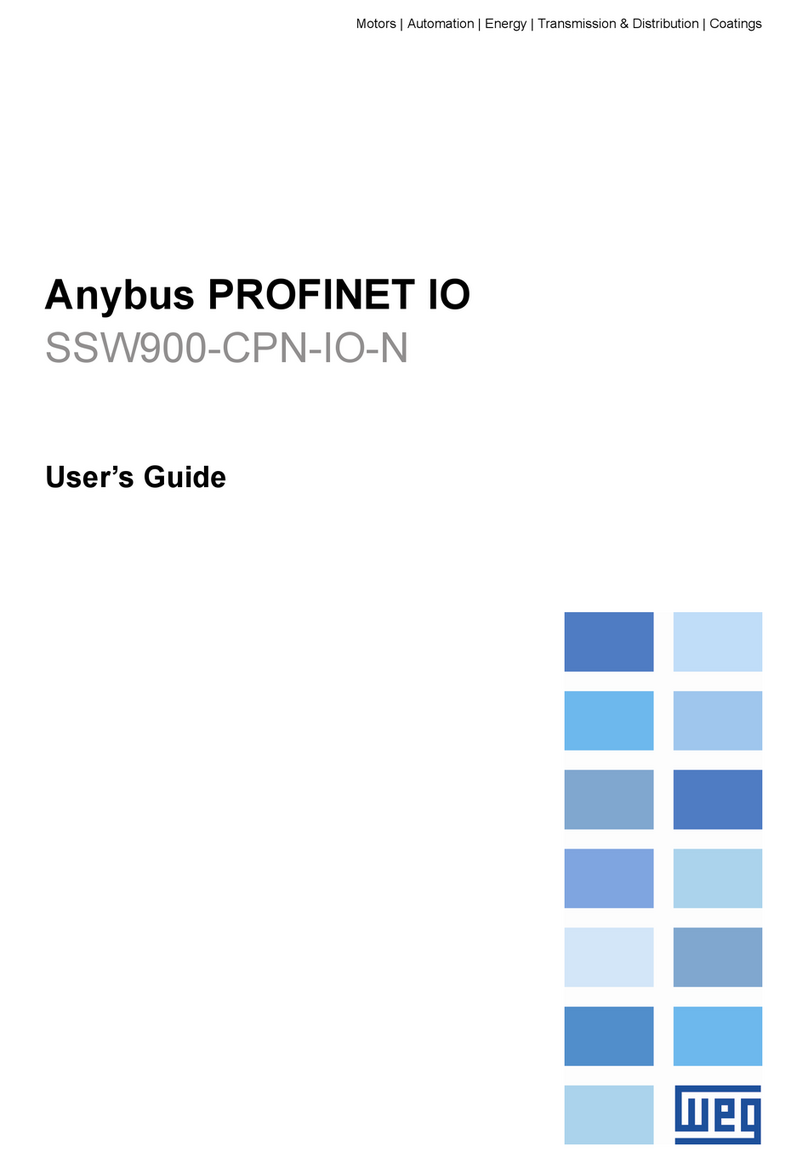
WEG
WEG SSW900 Series User manual
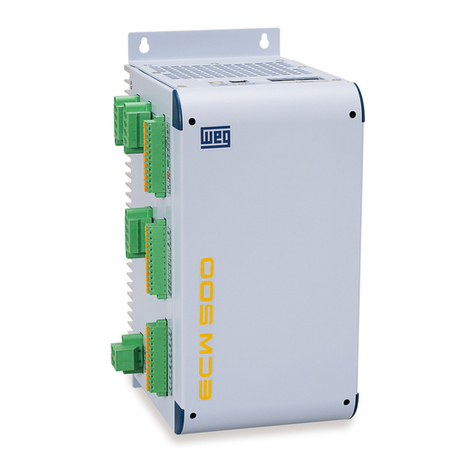
WEG
WEG ECW500 User manual
